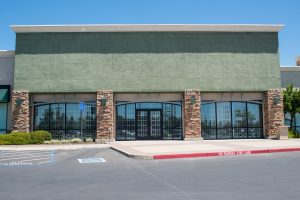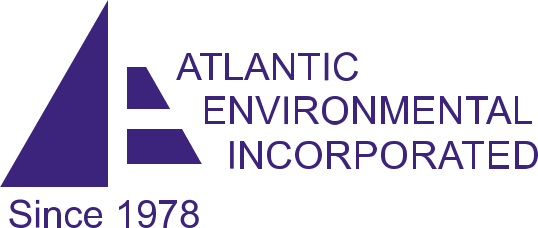If you need Phase I Environmental Site Assessment (ESA) assistance as discussed in this article call us at 973-366-4660 or email us at info@atlenv.com for details and a free estimate.
Written by Robert E. Sheriff, MS, CIH, CSP, President
November 21, 2018, Updated May 2019

Phase I Environmental Site Assessment
A Phase I Environmental Site Assessment, often called a Phase I ESA, is generally performed on a commercial property usually as part of a sale/purchase or commercial financing by a broker or other lending institution.
It is intended to protect a prospective buyer, property owner, or lending institution from some unforeseen aspect of the property that could affect the value or saleability of the property.
What Does A Phase I Environmental Property Assessment Cost?
This can vary considerably but usually costs from $2,000 to $4,000 depending upon the size and complexity of the building and/or the property itself. A former gas station’s property may be more expensive to perform a Phase I ESA due to the potential for soil and groundwater contamination from a leaking tank or spills. Also, an industrial site—especially a closed one—could be even more than $4000 due to the potential for asbestos, lead, abandon equipment, spills, illegal dumping, hazardous waste, soil contamination, and groundwater contamination. Don’t rule out land that use to be farmland. Pesticides, chemical fertilizers, are of concern especially if they are to have residential usage. Also, farmland is notorious for having waste site-whether legal or illegal that are of concern regardless of the intended new use.
To properly protect the involved parties, the Phase I must rigidly follow the ASTM guidelines. The latest ASTM guide is ASTM-E-1527-13 which was revised and updated in 2013.

A Phase I Environmental Site Assessment (ESA) follows the American Society of Testing and Materials (ASTM) guidelines known as ASTM-E-1527-13 Standard for Phase One ESAs and satisfies the “Due Diligence” process in a real estate or financial transaction. It is a detailed document setting out rules for what has to be done and qualifications of the person doing the work.
This ASTM-E-1527-13 standard is intended for Commercial Properties to identify possible environmental risks of a particular site and surrounding sites that may adversely affect the property value or pose a liability on a property owner, purchaser or financier. Only a Phase I Environmental (ESA) will satisfy the liability protection under CERCLA for “recognized environmental conditions”.
ASTM defines “recognized environmental condition” as the presence or likely presence of hazardous substances and petroleum products on a property under conditions that indicate an existing release, a past release, or a material threat of a release into the ground, groundwater or surface water.
A Phase 1 ESA that conforms to the appropriate level of “due diligence” as specified in ASTM-E-1527-13 includes the following:
- Thorough database/records review of all available sources in federal, state, county and municipal records of recognized environmental conditions.
- Historical land use research.
- Site inspection including surrounding properties.
- Interview with the property owner, occupants and possible neighbors.
- Documentation questionnaire.
- Obtaining any previous Phase 1 ESA, Business Plans, Permits or any other documents that may have environmental significance.
- Photographs of property and surrounding property.
- Geologic characteristic of property, soils, surface, and groundwater (i.e. 7.5-minute topographic maps).
- Aerial photographs and Sanborn Maps, Topographic Maps as available.
- Other relevant documents such as tax maps, title records, zoning, and land use records, building department records (as reasonably available).
- Records review of environmental records at county and state level. This is new in the 2013 version.
- A comprehensive report outlining findings of all above items.
Some of the most likely items found during a Phase I ESA are (but not limited to):
- Underground storage tank (UST) spill or leakage from gas stations or commercial fuel tanks.
- Surface and subsurface contamination due to commercial activities as chemical production, junkyards, service stations, spills, leaking surface
- contaminants.
- Stack or uncontrolled air emissions that settle on soil, drainage area, or surrounding properties.
- Illegal dumping of waste material including chemicals, fuels, oils, asbestos, lead, and radioactive materials.
The most common reasons for a Phase 1 ESA include:
- Purchase or sale of a property.
- Financing of a commercial property.
- Re-Financing or second mortgage of a commercial property.
- Change in use of property such as from farmland to school/daycare/playground/park/golf course etc.
- Evidence of clandestine (illegal) dumping, spills.
- Follow-up after the flood where sewerage, chemical, or fuel release is suspected.
For How Long Is A Phase I Environmental Site Assessment Valid?
The ASTM E1527-13 Standard says that the intended transaction (usually purchase/sale, or financing) should be within 180 days of the Phase I. Thus if it’s less than 6 months, it should be valid for sure—unless some major event on the property has occurred within 6 months such as a fire, or plant closure, known spill, or flood.
Between 6 months and 1 year generally, there is a need to update the information. After 1 year, it certainly should be redone. Performing a new Phase I in less than a year should be somewhat lower in cost since obtaining aerial photos, Sanborn maps and extensive survey of the surrounding properties, may not be necessary—noting that a site visit is still very important.
For further details, quotes, or references, please contact Robert Sheriff directly at 973-366-4660 or e-mail us at info@atlenv.com.
Our primary service areas for Phase I Environmental Site Assessment (ESA) in compliance with ASTM-E-1527-13 are: NJ, NY, NYC, PA, CT, DE, (Boston) MA, RI, Wash DC, WI, MD, MI, (Chicago) IL, VA, IN, (Atlanta) GA, AL, NC, SC, TN, (Dallas, Ft Worth) TX, OK, DC, AR, we can service most other areas of the U.S. but with some added travel charges.



